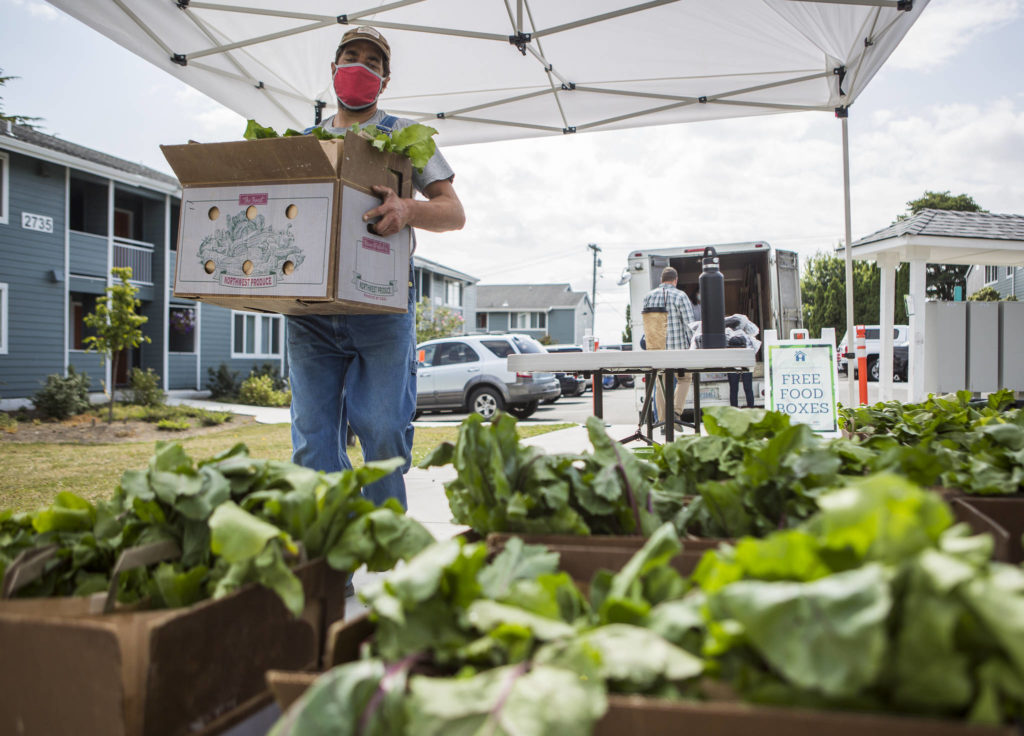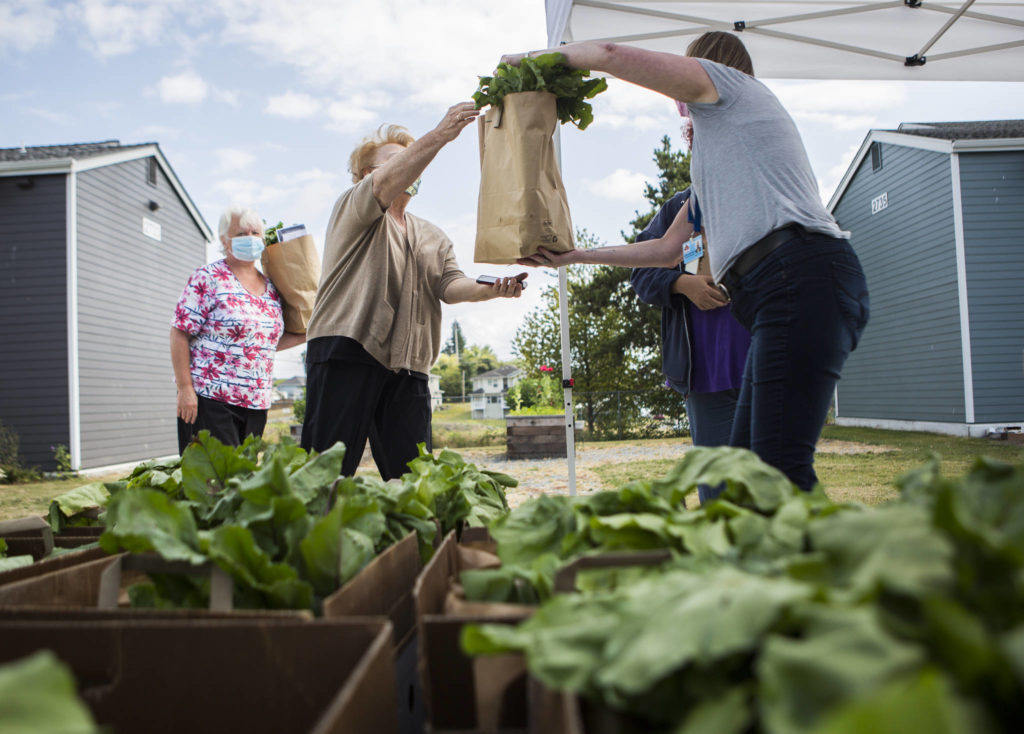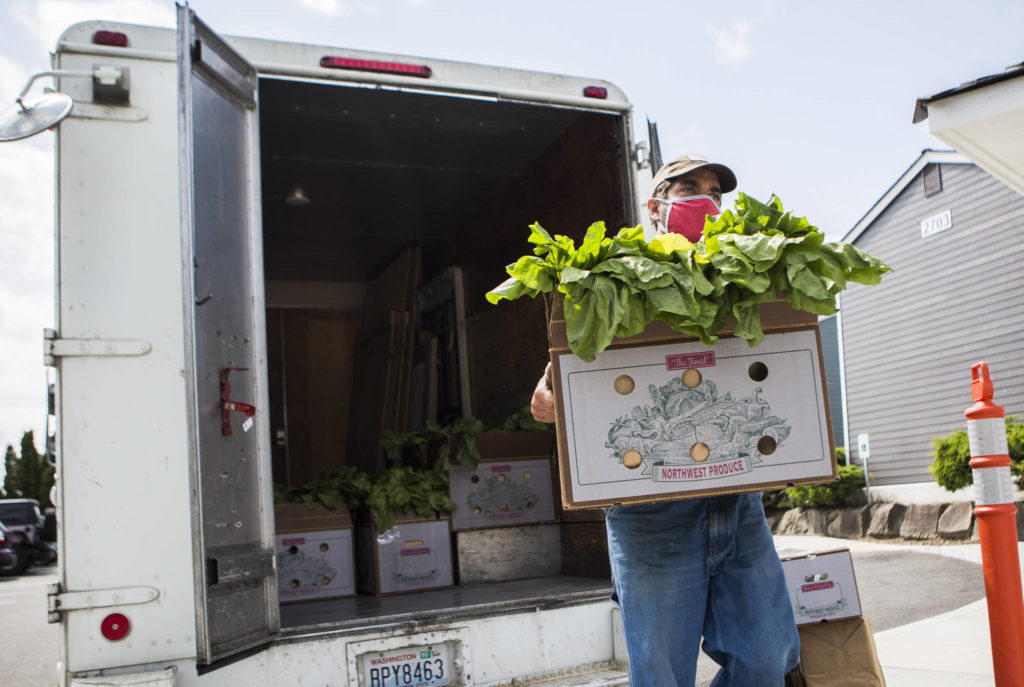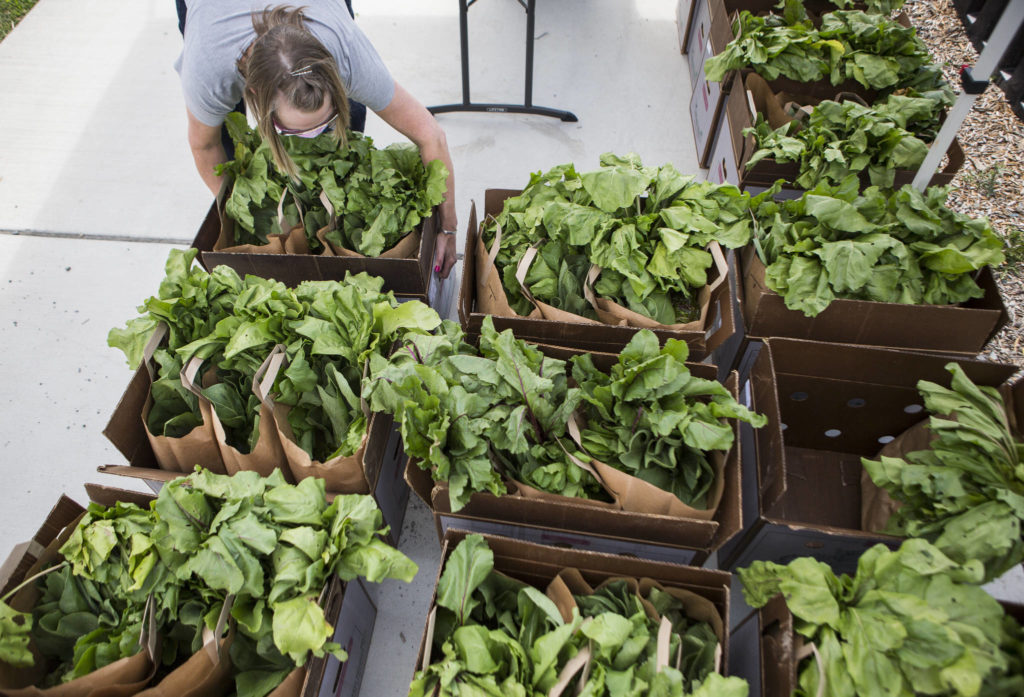EVERETT — Truong Hoanh Thi stepped slowly toward a white tent in the courtyard of her apartment complex last week, eyeing boxes of fresh lettuce, beets, cauliflower and turnips.
“You buy?” she asked, her gray hair peeking out from under a bamboo hat.
Hoanh Thi grinned wide as County Agriculture Coordinator Linda Neunzig explained the food was free and handed her a bag full of produce.
This is how Snohomish County is using $150,000 of $25 million in CARES Act funding it received in May to aid local businesses ailing amid the COVID-19 pandemic.
A new program called Nourishing Neighborhoods purchases food from local farms and distributes it to some of the most at-risk communities in the county.
The locations are based on Centers for Disease Control data showing how vulnerable a community is to disasters like an earthquake — or a disease outbreak. The county cross-referenced that data with unemployment rates and distances from grocery stores to identify seven multifamily housing developments throughout the county.
Some of them, like Wiggums Park Place Apartments, are Everett Housing Authority complexes.
“Our residents have been grateful and rather stunned,” said Donelle Kienholz, the family services program manager at the housing authority.
Many of the residents are immigrants and speak a spectrum of languages.
At Wiggums Park Place Apartments, Spanish is the least-spoken language, Kienholz said.
Residents of the 80-unit complex range from families to older adults.
For most of them, Kienholz said, transportation is the biggest barrier to getting food.
“Just trying to get to a food bank, even if they know where one is, is difficult,” she said. “And if you have any mobility issues … trying to carry it all back is a huge barrier.”
Bringing food to the complex eliminates that hurdle. And residents are getting fresh, healthy produce that’s often hard to come by at food banks, Kienholz said.
At the box drop-off, one resident patted his pockets to indicate he didn’t have money to pay for the food.
“It’s free!” said Shannon Atkins, the property service coordinator.
One older woman asked Neunzig what the bok choy in her box was and how to cook it. Neunzig recommended steaming the leafy vegetable, or sautéing it in a stir fry.
“God bless America,” the woman said, her hair wrapped up in a red, white and blue scarf.
As word spread about the boxes, children emerged from apartment doors all over the complex to pick up produce for their families.
Kienholz carried boxes to residents with mobility issues and set some aside for those who wouldn’t return from work until later.
The Nourishing Neighborhoods program began at the end of June. There’s enough funding to last through the end of September, county program manager John Holdsworth said. He’s working with the County Council to extend the pilot.
Snohomish farmer Vince Caruso coordinates collection and delivery of the food from four other local producers. The county pays the farmers full price for their goods.
“They can’t afford to donate things,” Neunzig said. “They’re trying to stay alive like everybody else.”
That income makes a big difference, especially for smaller farms, Caruso said.
The program allows local producers to get their product on the tables of lower-income families, something small farmers can’t often afford to do, Caruso added.
“This lets us get our food into parts of the community we normally don’t,” he said.
Local food is key for survival during the COVID-19 pandemic, Neunzig said. When disruptions in the supply chain left grocery shelves empty earlier this year, Snohomish County residents turned to local farmers en masse.
“We need to make sure our farmers are here for a very long time because they are our food security,” Neunzig said. “We need to know they’re going to be there for us when we need them.”
Julia-Grace Sanders: 425-339-3439; jgsanders@heraldnet.
Talk to us
> Give us your news tips.
> Send us a letter to the editor.
> More Herald contact information.





























